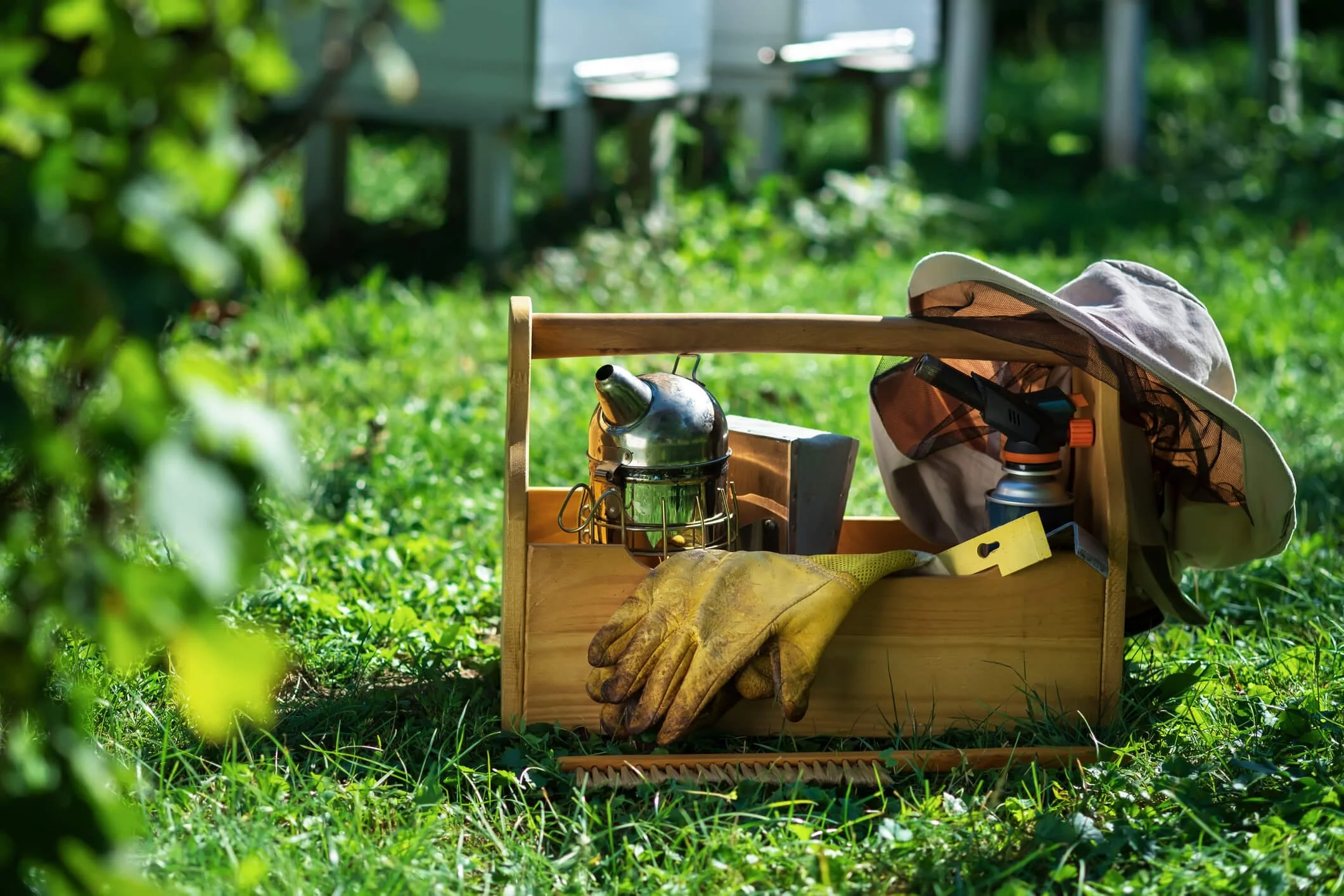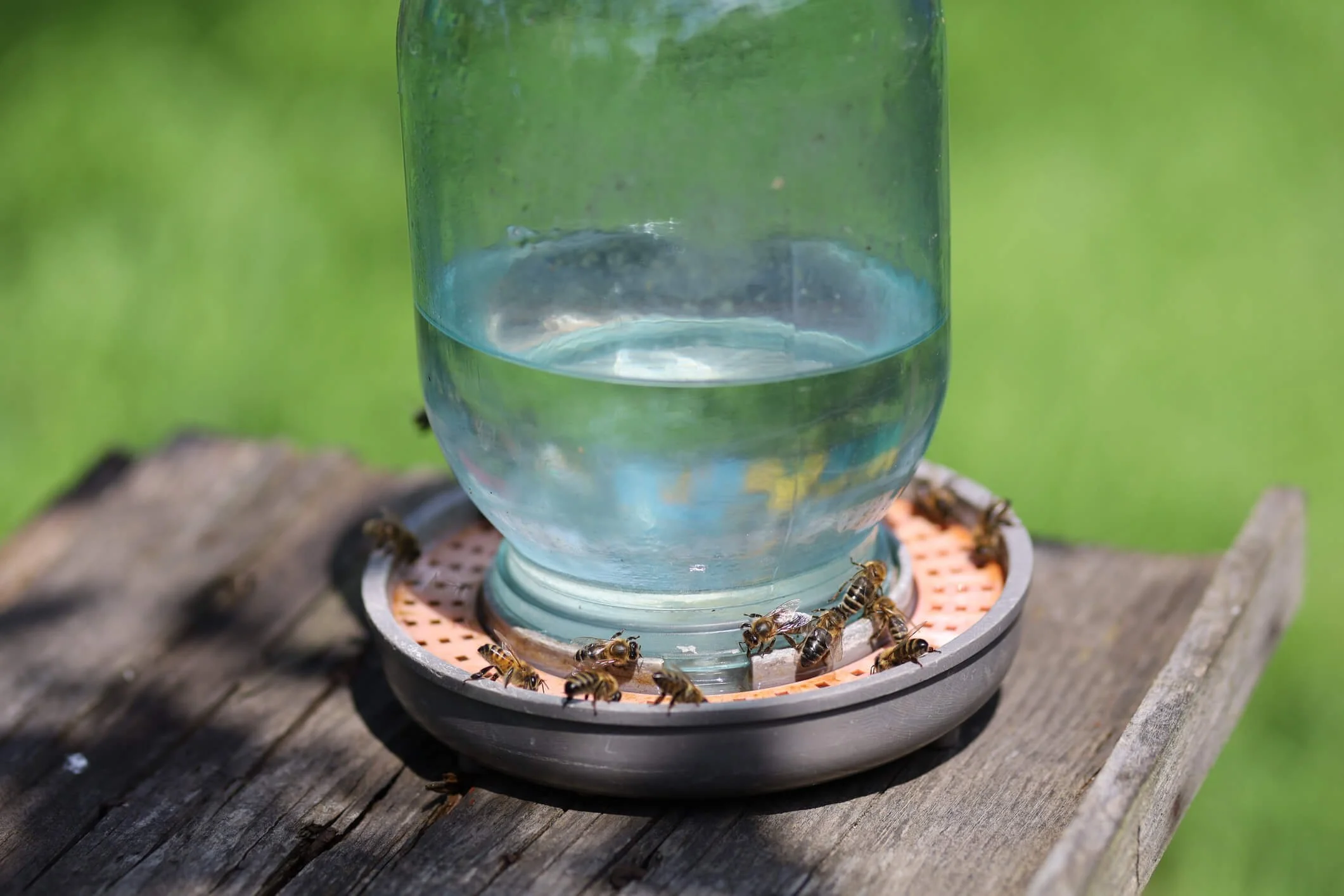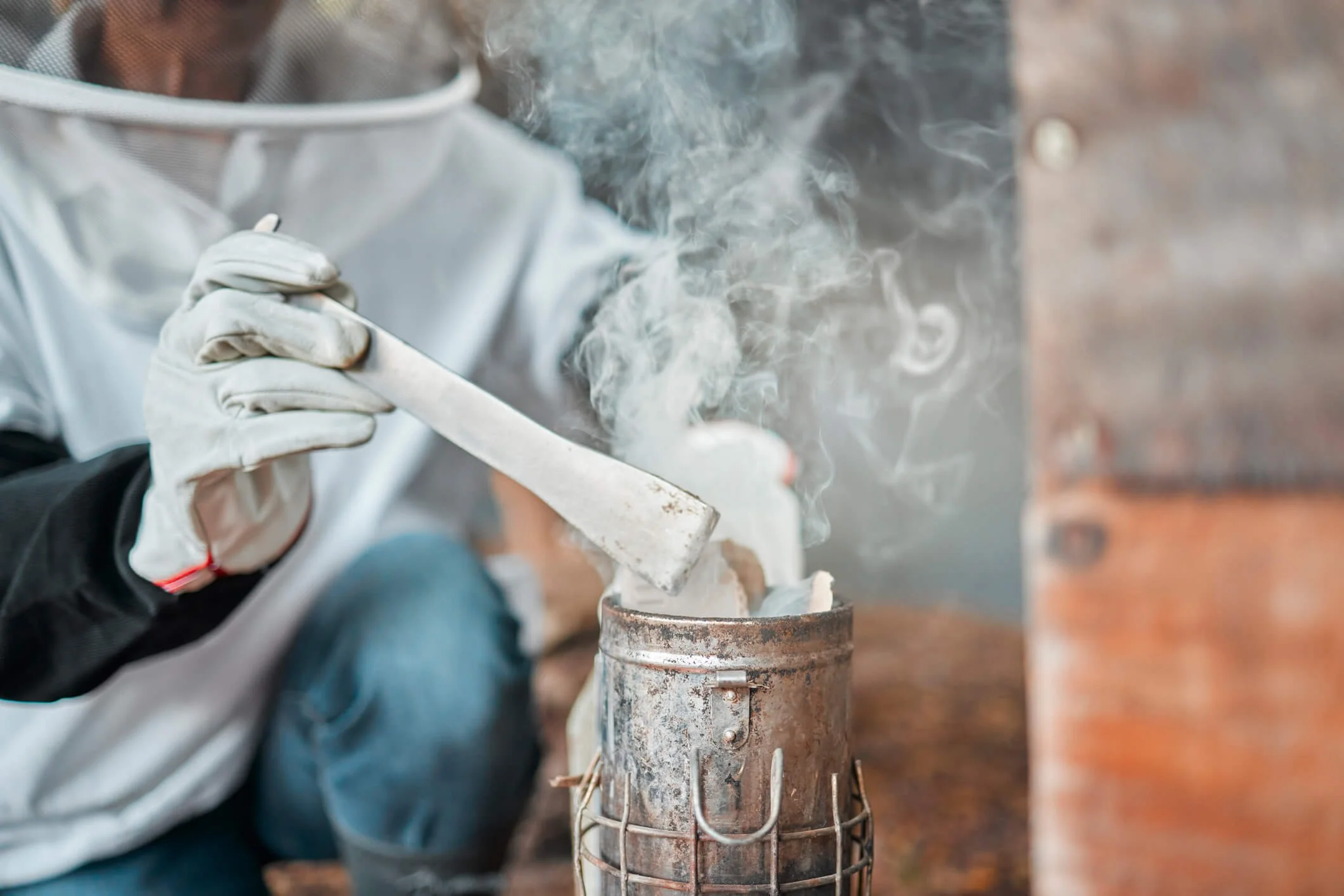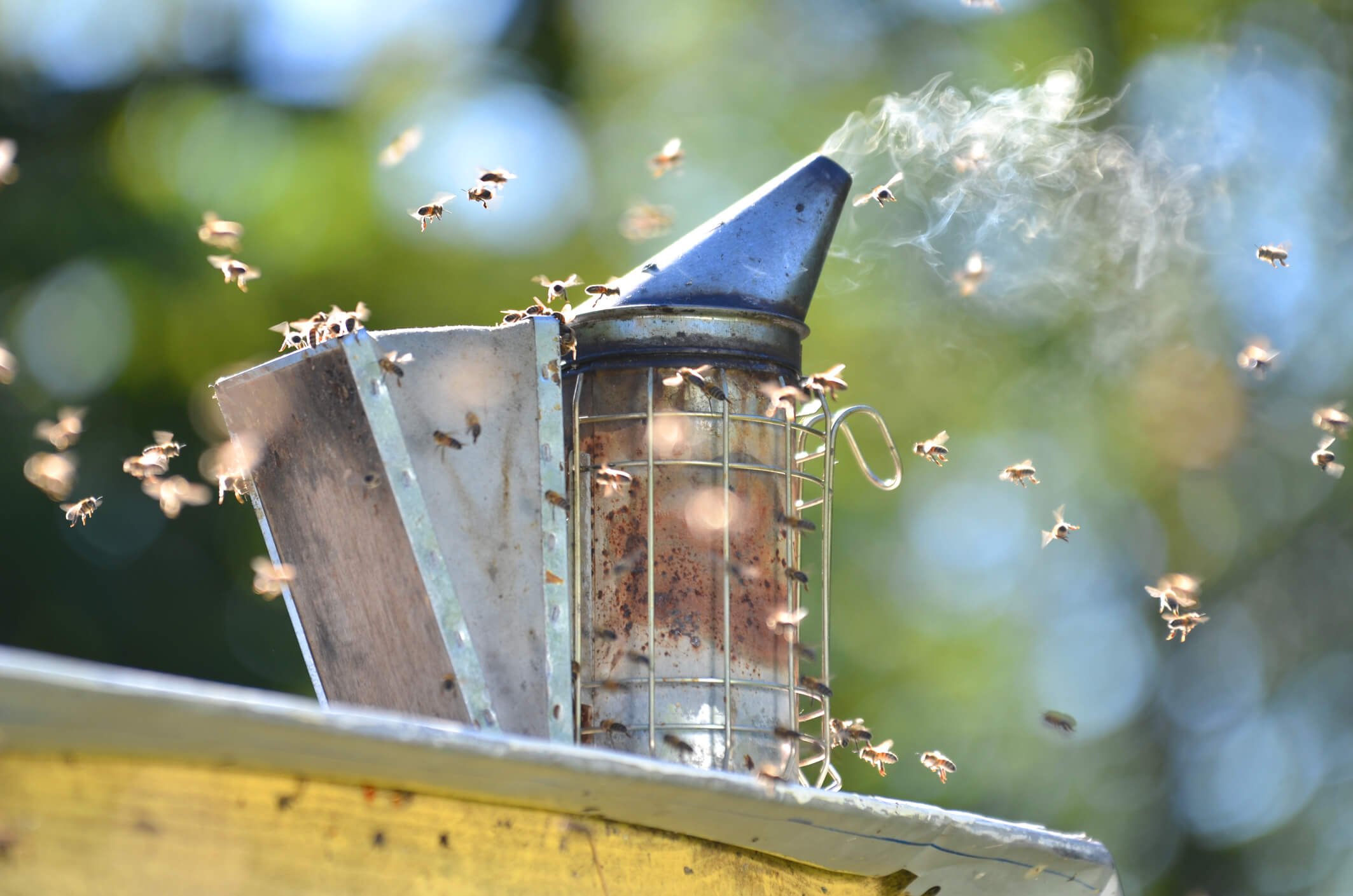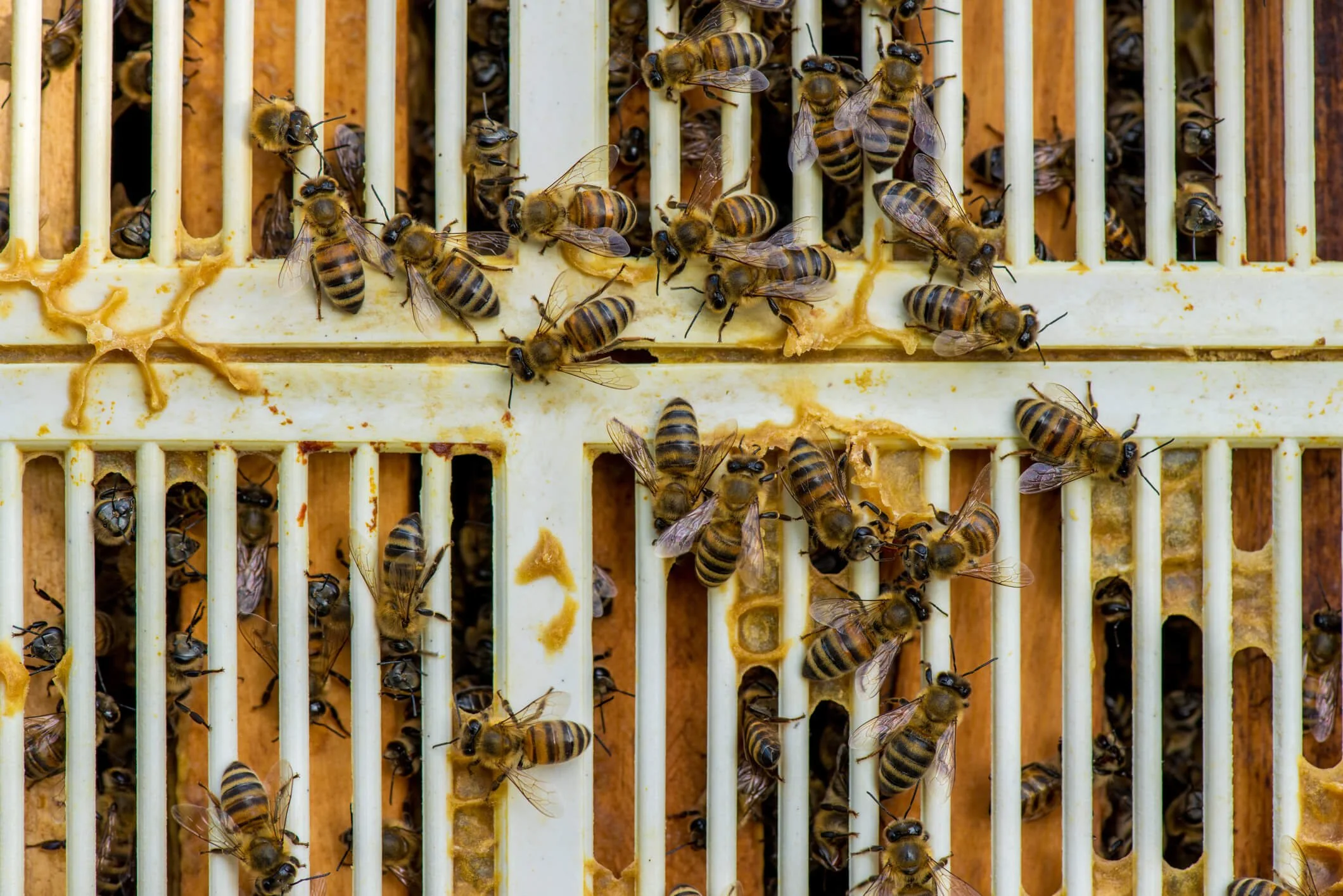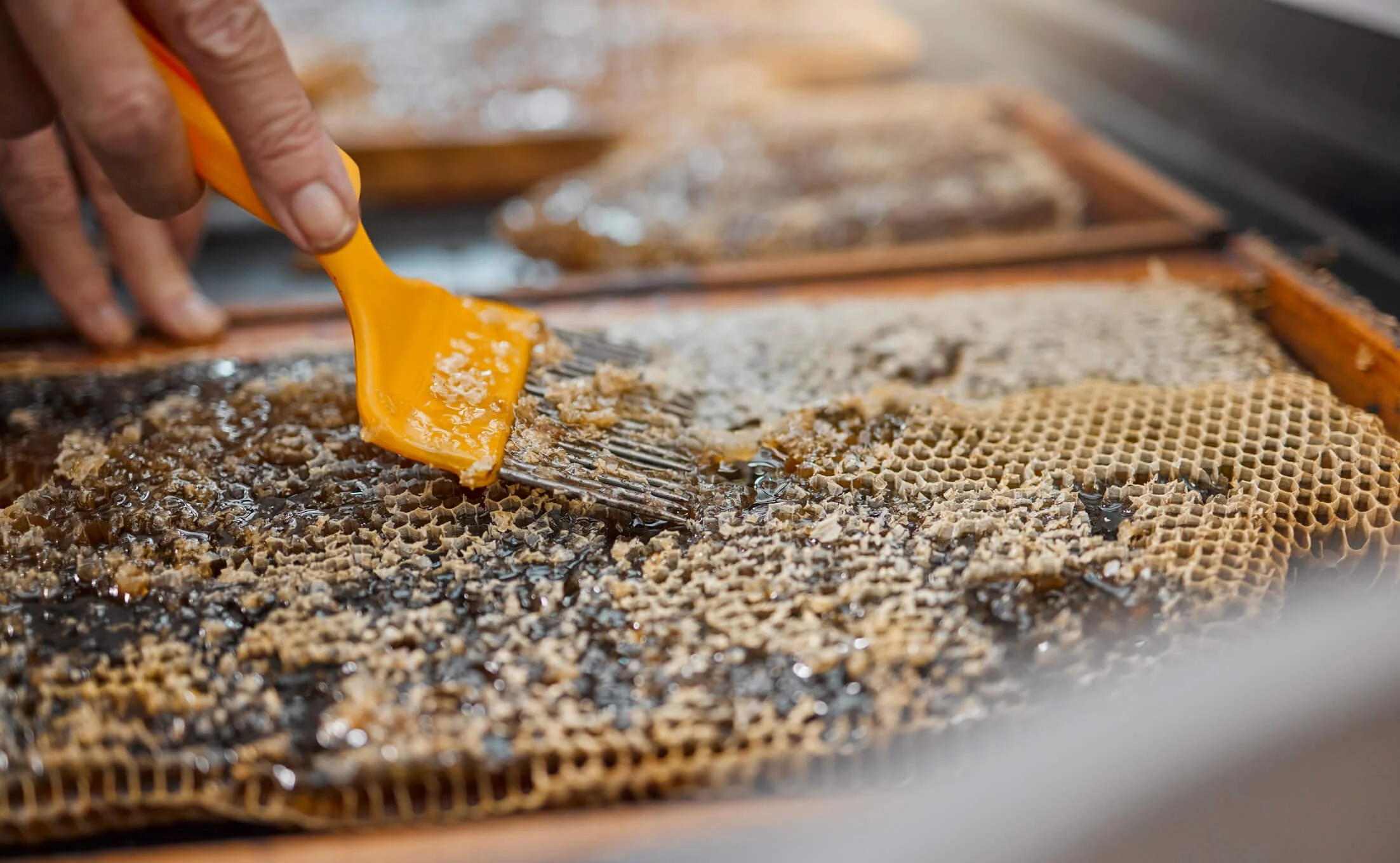Essential Beekeeping Equipment
Discover > Beekeeping > Essential Beekeeping Equipment
Beekeeping is a fascinating and incredible pastime. And if you're new to beekeeping, it can be intimidating. There are so many new things to learn, and there is so much knowledge available. However, as with any activity or endeavor, having the necessary essentials, tools, or equipment is one of the most crucial things to have and be prepared for.
All About Beekeeping: Dive into the world of beekeeping with our comprehensive guide, covering everything from hive management to honey production and beyond.
Beekeeping equipment can be divided into two types: equipment for your bees and equipment for you, the beekeeper. Here below are some of the essential beekeeping equipment that you should consider as recommended by most beekeepers.
For The Bees
Hives
Hives are where the bees live and work. It is the first piece of equipment that is required to start your beekeeping journey. There are different types of hives. The three most commonly used are the Langstroth, Warre, or Top Bar Hives.
A more detailed explanation of these three can be found in the article “The Different Type of Hives”. The kind of hive that you will choose will depend on your goal and objectives. The different hives come with a variety of components like boxes, frames, bars, stands, and more.
Feeders
At some point in time, feeders are needed to help supplement the food supply of your bees. Naturally, bees move to new locations when their food sources dry up. This can happen when the resources of your bees are low, or the colony is just starting out or when the nectar flow is slow.
The kind of feeder that you will need will depend on the type of hive you have chosen. It can be a rectangular pan with a wooden frame for hives that uses a frame. Or an inverted jar with holes in the lid for frame-less hives. These pans or jars will be filled with sugar water to feed the bees when needed.
Floral Partners: Flowers: Discover the importance of flowers in beekeeping and how they contribute to the overall health and productivity of honey bee colonies.
Sugar
Sugar is what you will feed your bees at times when their food supply is low to prevent starvation.
This is also especially true during winter or cold months when bees have less opportunity to forage. Or when flower season is not abundant. They require equal parts of sugar and water.
Apiculture Insights: Gain valuable insights into apiculture, the science and practice of beekeeping, with tips, techniques, and information to enhance your beekeeping journey.
For The Beekeeper
Bee Suit
Getting stung is inevitable if you are a beekeeper. It is only natural to get stung if you spend a lot of time around bees. As a beekeeper, it should be something that you'll have to get used to. Bee stings are painful. But they tend to hurt less over time the more you get stung. Tolerance to bee venom can develop in the body. Wearing a protective suit is the best way to avoid bee stings. It can be a full-body protective gear that includes a veil or mask or a jacket with a veil. A suit will give you full protection while a jacket will only protect your upper body.
Beekeeper's Corner: Visit the Beekeeper's Corner for a wealth of knowledge, resources, and community support for both novice and experienced beekeepers.
A good bee suit is one that is ventilated and covers you from your ankles to the tip of your head. This includes a hat and a veil or netting and they are gathered at the ankles, wrist, and neck to prevent bees from crawling in. But you can also compromise the jacket by wearing thick overalls and rubber boots. You can also go in any type of clothes if you do not have enough capital to spend on a full suit. As long as the material is thick and hard for the bees to pierce into and secure the places where they can crawl up. You should be good to go and still able to get the job done. White or tan or lighter and pale-colored clothing would be the most suitable to use when working with bees. Bees react unfavorably and dislike dark colors like black and brown. They often associate these with their animal predators such as the bear and skunk. The same goes for fuzzy materials and clothing made from animal fiber.
Farming Practices in Beekeeping: Explore sustainable and effective farming practices in beekeeping, ensuring the well-being of your bees and the success of your apiary.
Boots
Bees love to crawl. They have the ability to crawl up your pant leg and sting you. Leather and rubber boots are excellent for foot protection because bees cannot easily sting through them. There are beekeeping boots created specifically for the job. But you can use anything you have on hand if you want to save money.
Choose one with good and comfortable bottoms and made of sturdy material that bees can't sting through easily. If they are shallow, you can use duct tape to close the end of your pants so they could not crawl through them.
Gloves
Another important item is the gloves. Beekeeping gloves are made of soft leather, goatskin, or other flexible but sturdy material. This helps maximize maneuverability and comfort without compromising protection against stings. Some gloves even feature ventilation which is really convenient especially on a very hot day. You would also want one that comes up to your arms to avoid skin exposure while you are moving around.
If you do not have beekeeping gloves, any construction gloves that are made from thick and tough material can also be used. Use duct tapes at the end to eliminate skin exposure as bees love to crawl around. Gloves can become soiled and sticky over time. It's critical to keep them clean at all times to preserve hygiene and keep your hives healthy. It also reduces the possibility of infection spreading across colonies.
Hive Tool
A hive tool is a multipurpose handheld metal bar tool. It is used in maintaining and inspecting beehives. The hive tool is intended to be an all-in-one tool for beekeepers that can be used in a lot of tasks. Opening hives, checking frames, cutting or scraping propolis and wax off boxes, extracting comb from hive sides, or separating hive bodies can be done using the tool. Propolis, a resin-like substance, is used by bees to line their hives and fill any holes. They also use this for insulation. It is like glue and is very sturdy and difficult to pull apart once stuck together. This is where the hive tool comes in handy. It is an inexpensive, simple, and useful tool that will be used constantly and considered by most as a necessity.
However, if you want to use something that you already have on hand, you may also do so. You could substitute this one with a mini crowbar and a painter’s scraper if you already have those. There are different kinds of hive tools but the two main types are the standard hive tool and the J-Hook hive tool. The standard hive tool looks like a small crowbar with one end for frame levering and another end for box levering. The J-Hook hive tool is like the standard hive tool but has a longer curved hook at one end which is useful when you need extra leverage. The hive tool should be cleaned from time to time to remove traces of wax, propolis, and honey. This will help maintain hygiene and cleanliness and prevent the spread of bee diseases.
Smoker
A smoker or a bee smoker or smoke pot is usually a stainless steel cylinder with a lid that narrows to a half-inch diameter. This device is used in beekeeping to help calm bees. It makes them less active and less likely to sting during an inspection or when tending to your hive. The concept behind this device is that the bees have the ability to release pheromones into the air to communicate and alert the hive of danger. Pheromones are secreted chemicals that trigger a social response; eliciting a particular reaction from another member of the same species. It is like a “code red” alarm telling the other bees to be on guard. Ready to attack anything that endangers the colony.
When smoke is released into the air around the bees, it masks these pheromones making them undetectable. Smoke also triggers the bees to think that there is fire. Their initial instinct is to consume as much of their honey supply in preparation for a potential move and to abandon their hive. After engorging on honey, they are calm, docile, full, and weighted down making them less likely to sting.
Bee Brush
A bee brush is a soft bristles brush that is best used to gently and safely remove bees off a surface on a small scale. Bee brushes are made of long, soft, non-ridged bristles. Bees can be gently removed from a delicate comb, a frame, equipment, the beekeeper, or anywhere else they shouldn't be.
Bee brush can be used while moving frames from one hive to another, while extracting honey frames, repairing the broken comb, and sometimes for swarm removal. When used properly, a quality bee brush will not harm the bees and will ensure that they will not be agitated while you work with them.
Bee Blower
A fan-driven by gas or electricity that sweeps bees away from areas where you don't want them. When you need to transfer a large bunch of bees quickly and safely, this can be useful.
Queen Marker
To literally mark your queen, as she can be hard to find at times. It's a straightforward marker with a non-toxic chemical and visible ink. This easy-to-use gadget makes marking your queen's hindquarters a breeze.
Marking your queen can be really beneficial, particularly when you are just getting started. You will lose your hive if you lose your queen. Marking the queen is also one of the means of tracking the colony.
Queen Catcher
This is a small hand-held tool that looks like a large hair clip.
It is used for temporarily catching the queen safely and separating her from the hive. The queen catcher ensures that you don’t lose your queen while doing work on your hive.
Queen Excluder
A queen excluder is an optional tool that acts as a selective barrier inside the beehive. It is a thin sheet made of metal or plastic. It has holes big enough to allow workers and drones to pass through.
But it is small enough to exclude the queen. The purpose of this tool is to restrict the queen from laying eggs in the honey chambers. This tool is handy for beginners who are still unfamiliar with how queens operate.
Uncapping Tool
An inexpensive tool that is used to get the caps off the comb in preparation for honey extraction. These wax caps cover the cells in the honeycomb to protect the honey from pouring out.
This will enable you to keep the honeycomb intact on the frame, eliminating the need for the bees to draw out a new comb. There are two types of uncapping tools: the fork and the knife.
Books / Learning Resources
Beekeeping is a constant learning process. Being educated in your field is an essential element when it comes to being successful. Even the most experienced beekeepers are constantly learning new things from time to time. It helps to be updated on new ways of managing bees. Beekeeping is an ever-changing experience. Every honeybee colony in a particular environment with a lot of factors is different.
Insights into Honey Bees: Explore the fascinating world of honey bees, from their behavior and lifecycle to their crucial role in ecosystems and agriculture.
A beekeeper should be able to adapt and determine how particular activities or factors will affect the health of the bees. This degree of comprehension necessitates both research and patience. Books are an excellent source of information. Blogs, webinars, and other online tools are also available in today's digital age to keep you informed. Reading and learning as much as you can helps you make better decisions and gain a deeper understanding of your bees.
Beekeeping can be done in a lot of different ways. Not all beekeepers have the same set of tools and equipment. Each one has their own preference and techniques of how to work their way around the bees. Not all tools listed here are essentials. But most can come in handy especially if you are a beginner. Investing in high-quality equipment can make your beekeeping journey easier and more productive. Beekeeping requires a lot of commitment and learning. Invest in tools and invest in yourself. Continue to educate and practice and do not be afraid to fail. Learning and discovering the world of honeybees is sweet and rewarding as honey itself.
Flowers that Attract Honey Bees: Learn about specific flowers that attract honey bees, creating a bee-friendly environment and supporting pollination in your garden or landscape.
Don’t forget to check out our all in one guide for homesteading, farming and ranching in Texas.

